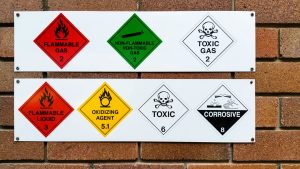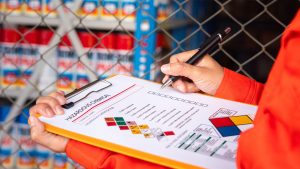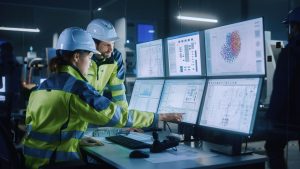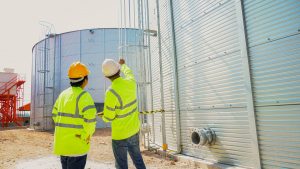Employers are the core of any business or organization. So is worker safety. Keeping your workers safe and healthy physically, mentally, and emotionally is critical. Doing so means effectively engaging your employees via real-time communication as people navigate complex day-to-day workplace responsibilities—and their associated risks.
When your employees are fully engaged, the key benefit is improved organizational performance tied to both individual and collective success. Importantly, technology can both support and drive a safety and risk-awareness culture where employees feel supported and informed.
Here, effective, efficient, and timely communication is critical. Ideally, technology can help all employees know how to better respond to health and safety issues. And who or where to turn to, either when issues arise, or as soon as new potential issues show signs of emerging.
Here, technology can transform data into actionable insights that ultimately protect the health and well-being of all employees and those they interact with within the workplace.
Technology can also help predict and prevent issues that may weaken employee engagement. Technology also enhances worker performance.
Ultimately, when people are well-engaged, they feel safe and therefore can work more effectively and efficiently.
How Can Businesses Be Proactive Amidst Ongoing Uncertainty?
The workplace now, no matter the industry, is highly complex and fast-moving. There are many external factors—not ones necessarily your business or organization may have control over, of course—that can spark ongoing employee uncertainty. This is especially true when employee health, safety, and wellness levels become compromised or weakened. Some reasons why may be, for instance, tied to economic upheaval, natural disasters, political unrest, and public health emergencies—either happening in silos or in connection to each other—that increase anxiety levels for your employees.
For example, COVID-19 increased uncertainty, anxiety, and stress levels for so many workers across all industries and sectors around the world. Health and safety crises like this, of course, make maintaining and improving employee engagement only more critical than ever before.
Some employees, for instance, must perform work amidst natural disasters, extreme weather conditions, and so on. All the while, they need effective business continuity processes and procedures in place.
Further complicating matters is that risks and hazards are not always easily visible and can be complicated to measure. Such risks and hazards include poor organizational change management, traumatic events or materials, a poor physical environment, and a lack of role clarity.
Additionally, employees may be unaware dangers are present or may feel hesitant to report risks and hazards in the first place. For example, perhaps someone lacks awareness of an issue, they are unable to properly monitor risks because they are heads-down on deadlines, or they are fearful of seeking support or asking for help due to stigma.
How Technology Engages Employers Matters
Employee engagement remains a critical area of focus for all industries. There is an increased demand for easy ways to engage workers to identify blind spots. Yet, how an organization chooses to engage workers is important.
Worker engagement at its core—comes down to safety. Health and safety professionals must therefore strive to put health and safety back into the hands of their employees. Here, open feedback and easily accessible communication lines are critical. This is especially true given how one person’s action or lack of action can potentially influence every person around them, as well.
It remains critical to continuously assess employee safety and well-being. And then simultaneously adjust and tweak workplace policies and procedures to remain agile and adaptable when new information demands changes to be made. The common thread remains trifold: proactivity, empowerment, and increased awareness.
Why Technology is Necessary to Bridge Communication Gaps
There are key opportunities for technology to improve employee engagement through enhanced communication, smarter reporting, and live analytical capabilities. This is especially needed right now for highly mobile or remote workplaces, such as those in the renewable energy sector, for instance, where employees may perform tasks across various regions or localities.
As another example of many, technology is also critical to driving engagement across industries without many field workers, such as is the case for manufacturing companies. Or within factories where many health and safety workers at once are regularly present.
Here, management must be sure to communicate directly and quickly—in an automated fashion whenever possible—since there may be large physical distances between individuals and teams. This is the case, for instance, when it comes to employees filing reports, sending out important and urgent alerts, and so on.
Ultimately, it is critical to know how to engage and in what ways with workers operating across a vast variety of scenarios. It is not only about how you communicate with employees but also how employees can communicate with you. And then, of course, what you do with this information to drive beneficial change and organizational effectiveness.
How SAI360’s Mobile Application Drives Innovation
SAI360 recognizes that companies need flexible, digitized workforces where technology makes collaboration easier, productivity higher, and business’ financial returns more competitive year-over-year.
Our single native mobile app—called Roam—helps organizations and their employees optimize participation in Environment, Health, Safety, and Sustainability (EHS&S) as well as all industries in a cost-efficient and streamlined manner.
There are many ways Roam’s over 25 preconfigured modules can digitally engage employees to improve workplace health and safety. For example, just a few ways include:
- Sending urgent digitized information out quickly, such as alerts or lessons learned
- Access to guided online procedures when a worker needs it most
- Sharing critical safety information based on a worker’s GPS location
- Requesting questionnaires to identify and remediate hazards & risks
- Allow employees to submit ideas for organizational improvement regardless of their location
- Readiness assessments including health screenings
- Conducting surveys across any issue or topic
- Capturing incidents, accidents, near misses, and inspections anytime and anywhere, even when offline
- Options to capture information such as photos quickly and inform others in real-time of hazards
Importantly, the Roam mobile app can be made available in any language thereby reducing any communication barriers and further improving engagement. Roam allows users to engage and receive feedback from all employees, contractors and colleagues regarding all topics or circumstances. This is no matter where someone physically is in the world or whether they have access to a computer or mobile device. If someone encounters a hazard, for instance, others can be alerted instantly via two-way communication.
Small steps like these can have a big impact to make more employees feel safe, heard, and protected, thereby improving their workplace productivity.
Final Thoughts
Employees working amidst a fast-paced, risk-filled environment no matter the industry, sector, or location need to make fast decisions and inform others they interact with and work with as needed without delay.
When employees are undertaking a task, they need to make informed decisions in live time. Many of these decisions can impact the health of safety of themselves and those they work or interact with on the job.
Technology is a valuable tool that can save a business’s bottom line and the lives of those helping to drive organizational success every day. Organizations depend on the people behind them. Keeping them safe, healthy, and satisfied must remain a critical leadership imperative.
This article was originally published by SAI360.






